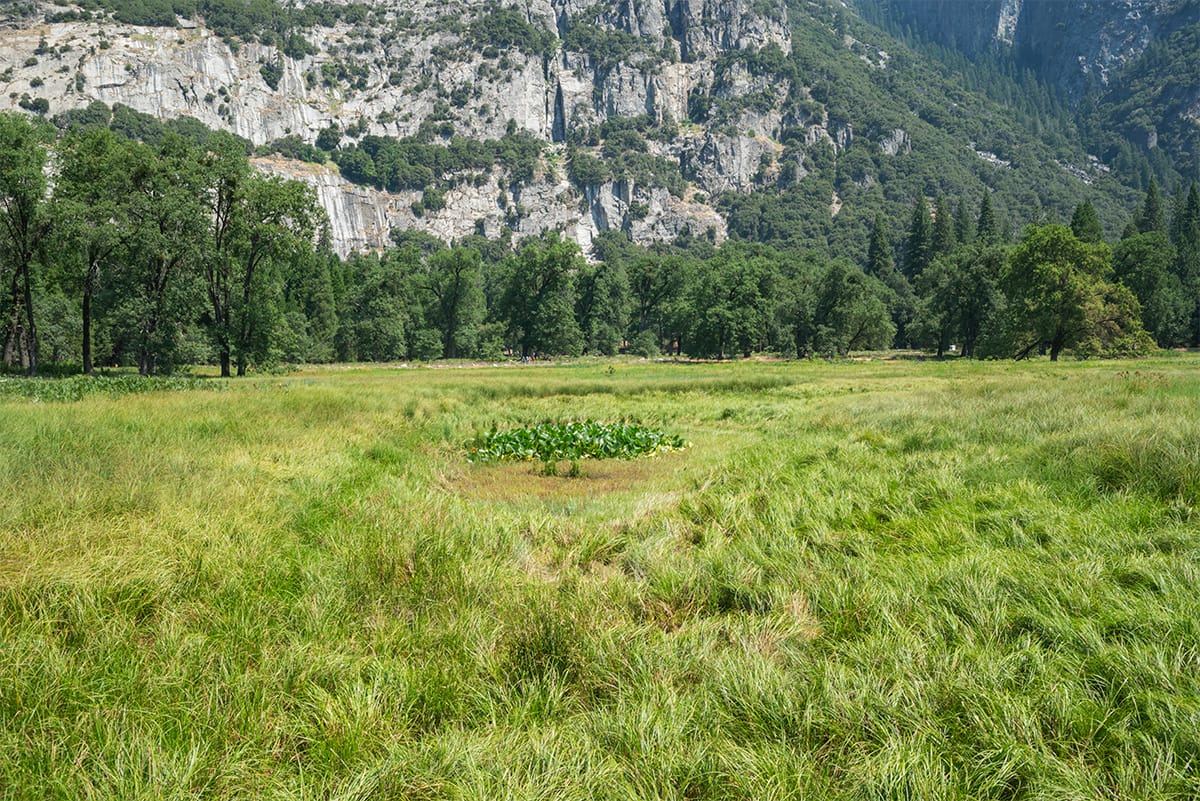Your first visit to Yosemite National Park will likely induce extreme neck pain. Standing in the valley, it’s impossible not to tilt your head backwards and rivet your gaze upwards. Even the view from Curry Village’s crowded parking lot is impressive. Where the sky should be, immense slabs of granite rise into an atmosphere of their own. This wall of rock, streaked and pockmarked by weather, extends its width in every direction. Its height ends seven thousand feet above, in Glacier Point, a popular hike and lookout. A quick walk past the Curry Village bus stop leads to the Royal Arches, which curve in dark striations across an expanse of granite underneath the North Dome.
With so many geological absurdities to fixate on, we forget to look down. An equally remarkable attraction goes unnoticed amidst the grandeur of granite: Yosemite plants. Relieve your neck and reconnect with the park’s earth by reading on. In this blog, you’ll learn how to recognize native Yosemite plants with their own entrancing virtues of historical use by Yosemite’s native Ahwahnechee people.
The History of Yosemite’s Meadows
In the shadows cast El Capitan, Half Dome, and Yosemite Falls, lie the montane meadows of Yosemite National Park. These inconspicuous fields are the park’s most biodiverse areas. They act as natural sponges which retain water, filter pollutants, and foster the growth of about one third of all Yosemite plants. Before the 1850s, when white settlers brought hordes of livestock to the meadows, the Ahwahnechee tribe cared for these fields by setting them on fire. Prescribed burns, though they sound contradictory, removed encroaching trees and dry grass to encourage the growth of Yosemite plants necessary to the Ahwahnechee way of life.
Though the purposes of these Yosemite plants are unknown by most visitors, they still bloom in the valley today with vivacious persistence. On a brief walk through any of the valley’s meadows, including Cooks Meadow, Ahwahnee Meadow, or the meadows below El Capitan, you can still observe many species that centuries of native stewardship once maintained.
Yosemite Plants Found in the Valley

Across the street from Yosemite Village, a boardwalk loops through Cook’s Meadow and Sentinel Meadow. A series of signs along the walk announce the presence of “Traditional Plants” such as milkweed, deer grass, and brakenfern, all of which were “valuable resources to Miwok people”. Indeed, the paneled pathway sits just above an exquisite array of Yosemite Plants. The signage, however, does not state what exactly these plants were used for, or how to recognize them.
Yarrow, Achillea Millefolium
In combination with ceremonial and shamanistic curative practices, the Miwok tribes relied heavily on Herbal medicines, called “Hukiku”. The yarrow plant was indispensable in its myriad uses for hukiku. An infusion of steeped yarrow soothed raw throats and cold symptoms. During the influenza epidemic of 1919, the infusion was even applied externally. A poultice of mashed yarrow leaves was often bound to wounds as a method of pain relief. It reduced inflammation, and fought infection.
How to Identify Yarrow
Tiny white flowers with yellow centers grow so closely, that they seem to assemble one large flower. Each cluster has a flat top and stands about three feet tall. Fern-like leaves protrude from thin stems.
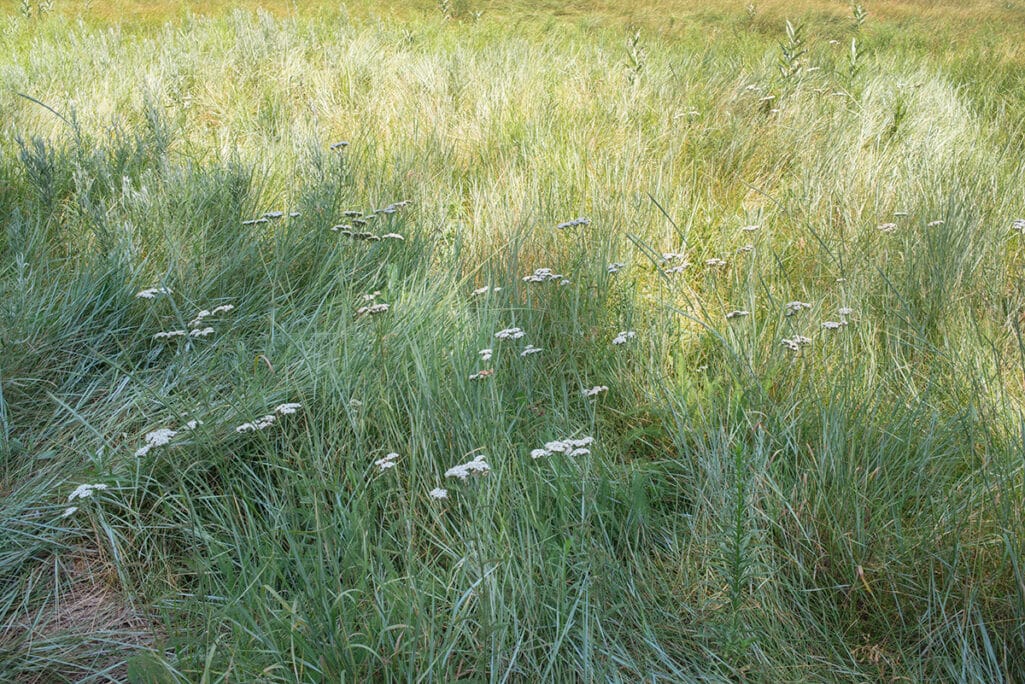

MilkWeed, Asclepias Syriaca
Milkweed, known as “Istawu” by Miwok tribes, served a variety of medicinal and dietary purposes. Its leaves and stem were crushed to create a milky substance that removed warts. The root was boiled into a concentrated cider used to cure venereal diseases. Boiled milkweed leaves, broken into pieces, were often added to other drinks, such as manzanita cider, as a means of thickening their consistency. Each part of the plant, its flowers, buses, sprouts, and shoots, were prepared and eaten.
How to Identify Milkweed
The broad leaves of Milkweed droop over the surrounding grasses of Cooks Meadow. Each one has an underside of soft hair. Flowers with five petals sprout in clusters of white, purple, or pink, and exude a sweet smell that attracts butterflies and bees.
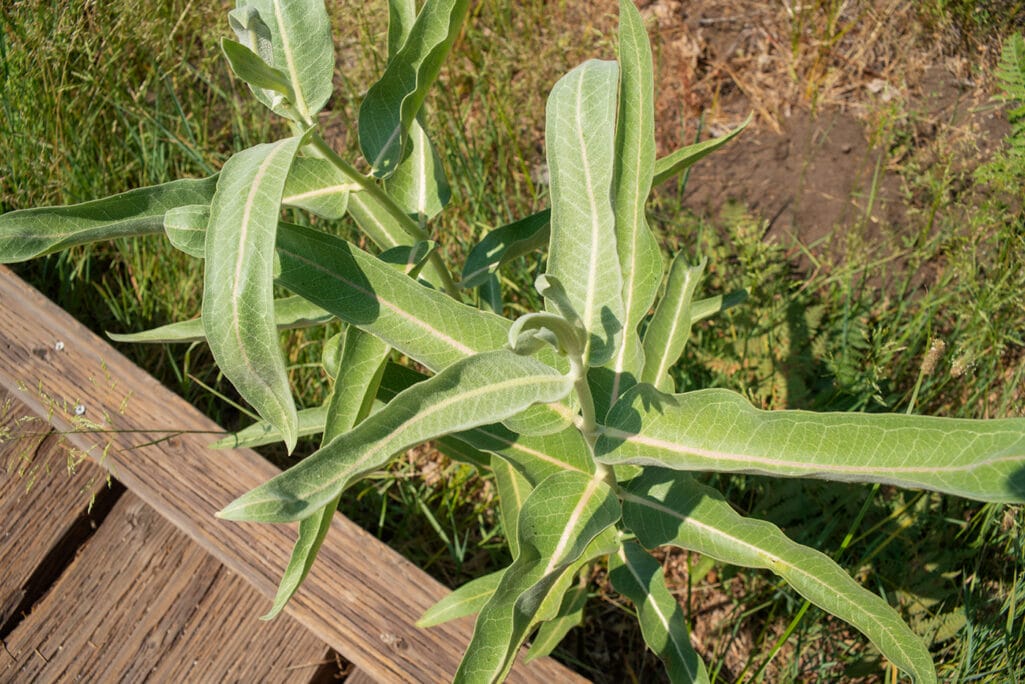
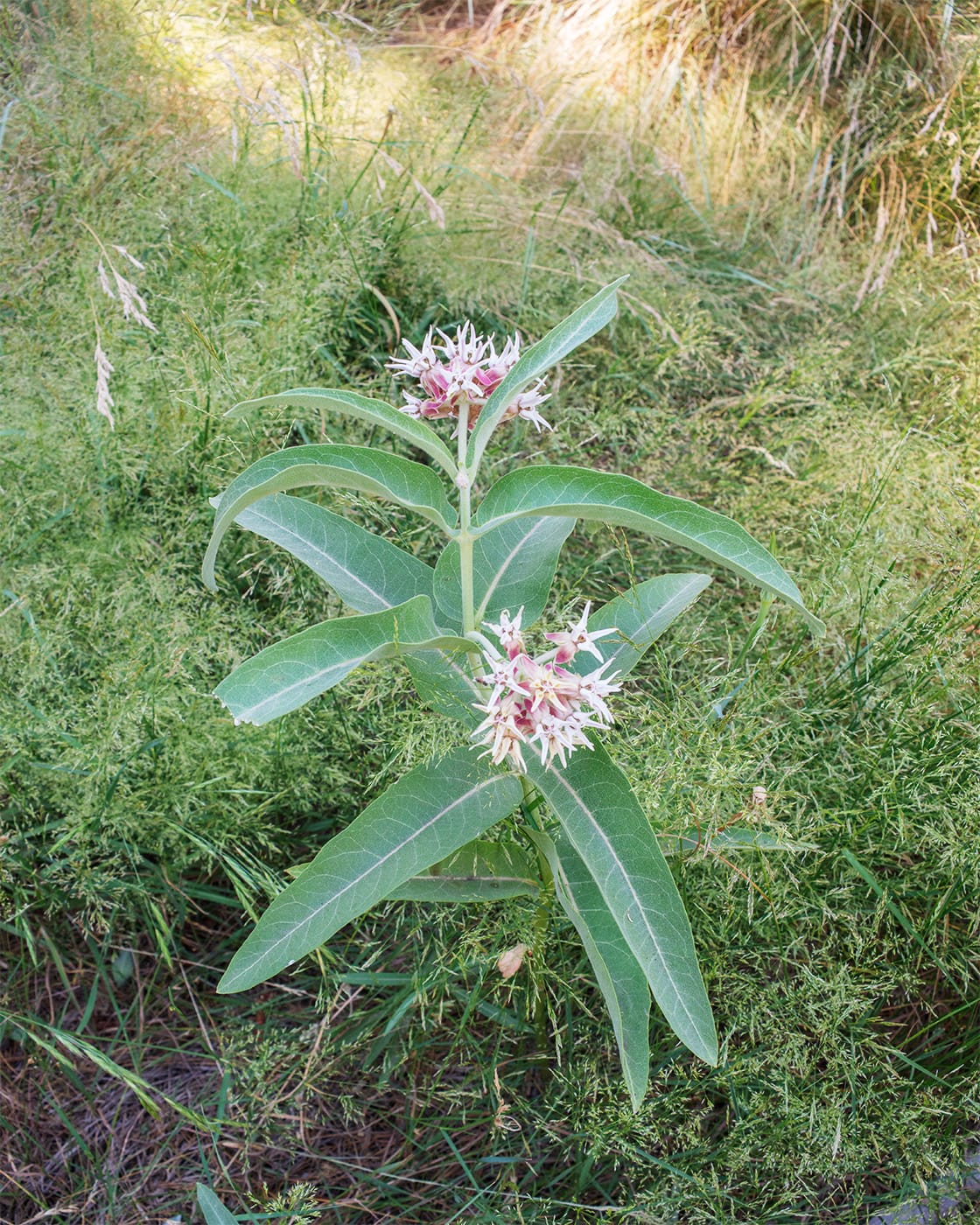
Whiteleaf Manzanita, Arctostaphylos
Of all the purposeful Yosemite plants, Manzanita is one of the most recognized for its use by Ahwanechee natives. Its berries were handpicked, or shaken from its branches, and then tossed in the air, where the wind blew away their dirt and grime. They were then ground into a course meal and poured into a winnowing basket, placed on top of a cooking basket. Slowly, water was poured over the meal until all of its flavor had seeped into the lower basket. This was the process used to create manzanita cider, a tasty drink, cure for stomachaches, and an appetizer to meals.
How to Identify Manzanita
Manzanita grow in countless shapes and sizes, but all species have reddish bark, rounded leaves, and light pink flowers that blossom into berries during the summer. In the valley, manzanita grows close to the ground as an understory. It lines popular hiking trails, such as the John Muir Trail, which connects to the Mist Trail. Tall manzanita trees are also common.
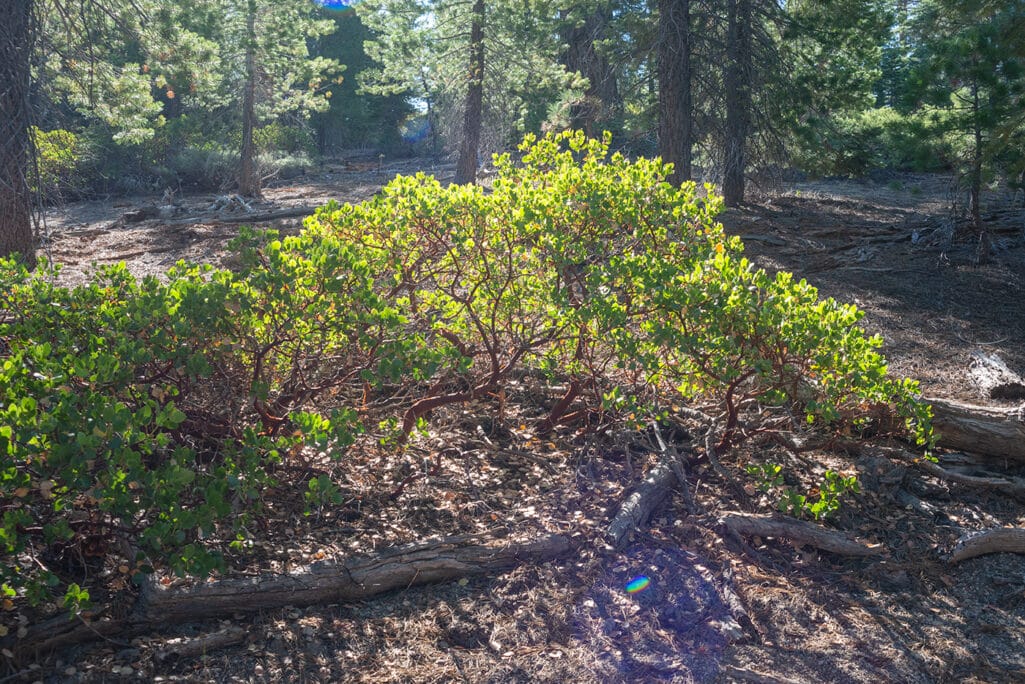
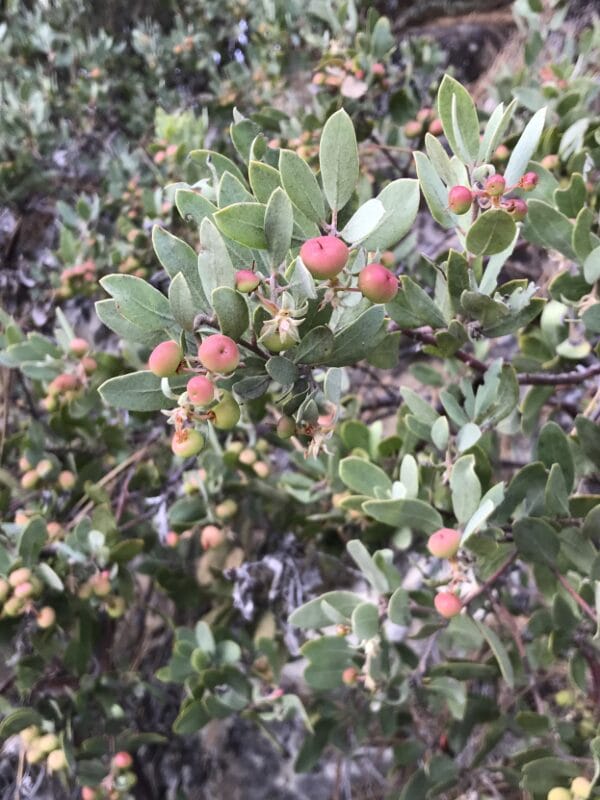
Soap Plant, Chlorogalum Pomeridianum
The Ahwahnechee uncovered the root of this Yosemite Plant with a digging stick, and then roasted and peeled its fiberous skin to reveal a smooth and onion-like bulb. Crushing this bulb into a liquid pulp created an amazing soap which supported luxurious hair growth, cleaned baskets, and washed clothing. Roasting the bulbs produced a glue that sealed baskets and bound feathers to arrows. Mashed soap root bulbs were also thrown in rivers and lakes as a sort of poison. Fish and eels, temporarily stunned, would then float to the surface for easy collection.
How to Identify Soap Plant
Wavy leaves grow up to two feet long, reaching outwards to form a wide ground plant. Its flowers, which bloom in early summer, shoot up into the air. Their white petals bend like unfolding stars.
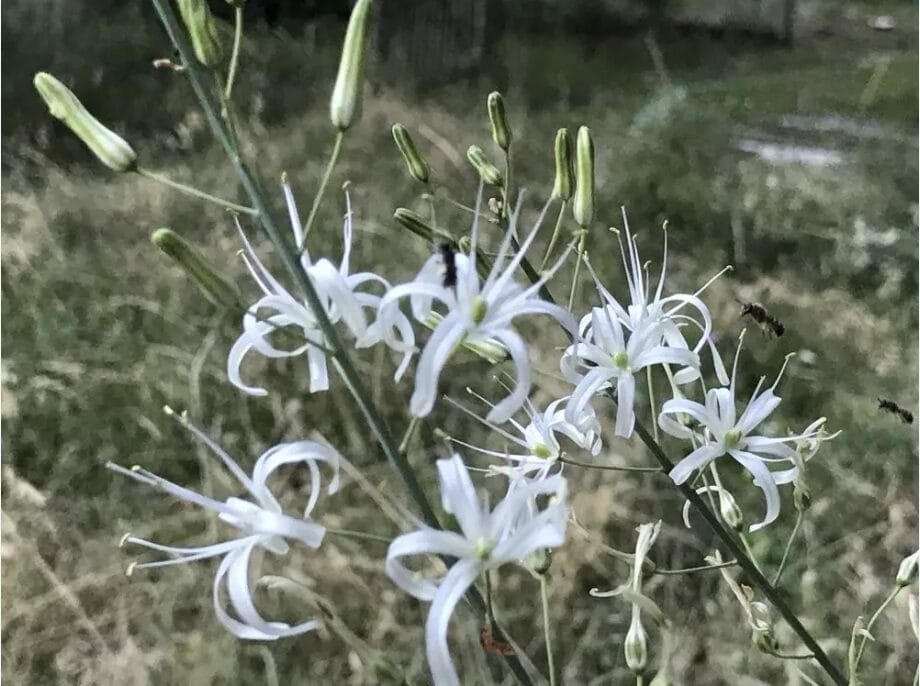
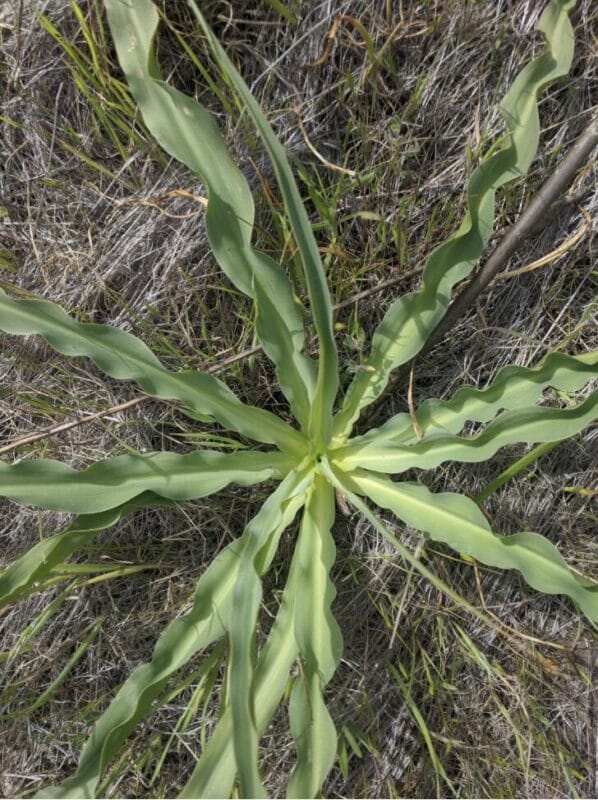
Mountain Misery, Chamaebatia Foliolosa
The delicate petals of Mountain Misery unfold in the months May and July, freckling the edges of Wawona Meadow with bright white blooms. The Ahwahnechee once steeped its leaves in hot water to create a tea that cured chicken pox, smallpox, and measles. Diseases such as these, which caused skin eruptions, were referred to as “molazu” by Miwok tribes. The tea also relieved rheumatism, and was commonly mixed with other herbs and drunk for coughs and colds.
How to Identify Mountain Misery
This Yosemite plant grows low to the ground, sometimes accumulating into a carpet of undergrowth. Its flowers are the size of a quarter, and have five white petals with a pistol of yellow pollen.
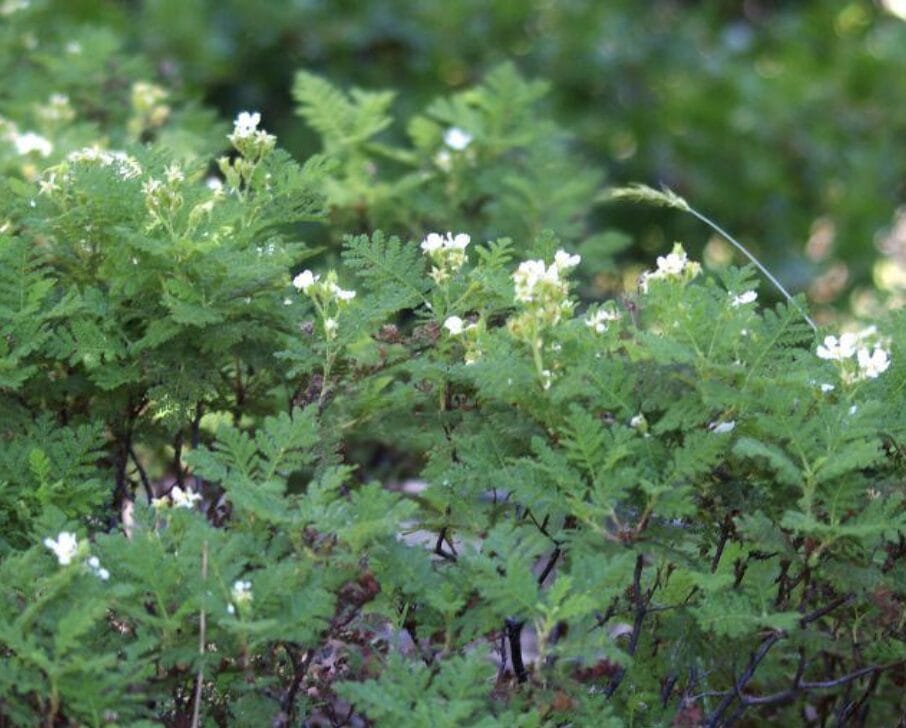
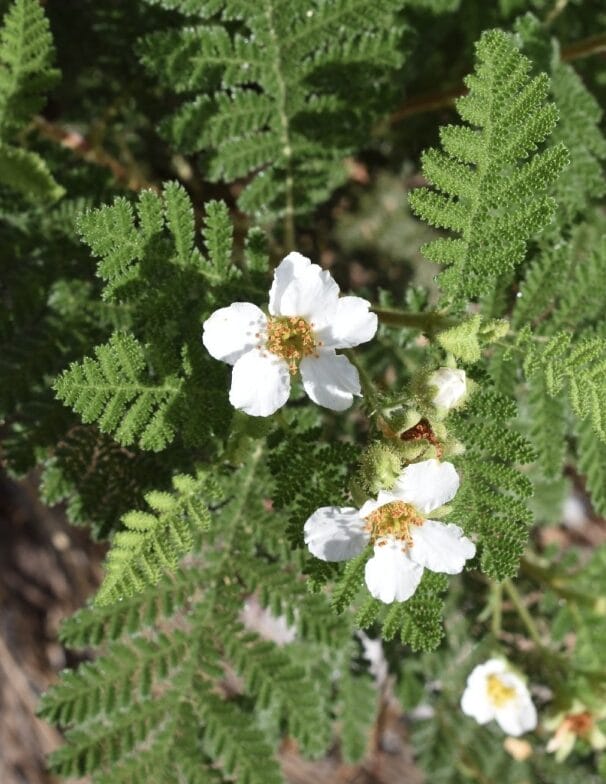
Lupine, Lupinus
While this Yosemite plant grows from earth drier than the valley’s meadows, taller varieties of Lupine blossom in the meadows along Tioga Pass. Shorter plants speckle the alpine meadows of Yosemite purple throughout the summer. The Ahwahnechee people ate certain varieties of lupine, including rose lupine and broad-leaved lupine. They steamed its leaves and flowers slowly in an earth oven, a pit in the ground where greens were spread on top of large leaves, often grape leaves, and placed on a layer of hot stones. More stones sat on top of the leaves, and more leaves on top of those stones, and so forth, until the hole was filled and earth was piled overtop to seal the heat inside. A fire, built on top of the earth, cooked the lupine for many hours.
How to Identify Lupine
Pea-pod flowers stack into a towering stalk of purple, white or pink. Lupine leaves reach from the lower stem in radial bursts of bright green. Some lupine species grow closer to the ground, while others sprout up to two feet tall.


Continuing A History of Interdependence
Our way of life no longer centers around these Yosemite plants. We use modern medicines, buy food from the grocery store, and live blissfully without ever stepping foot in a meadow. And yet, years ago, the lives of fellow humans revolved around their intense familiarity with plants.
Walking through the same meadows that Ahwahnechee natives once cared for, surrounded by the same Yosemite plants, we stand in proximity to an opportunity: connect with nature not as visitors, but as participants.
By naming a stalk of milkweed or a closer of yarrow, we ground ourselves in our environment. We become a part of it. Through the experience of examining leaves and recalling their use by those who lived with that land before us, we are bound not only to nature in its present state, but to a history of interdependence between humans and plants.

Text and most images by Claire Kosky
The post Yosemite: Plants with a Purpose appeared first on Lasting Adventures | Top-Rated Guide Services.










